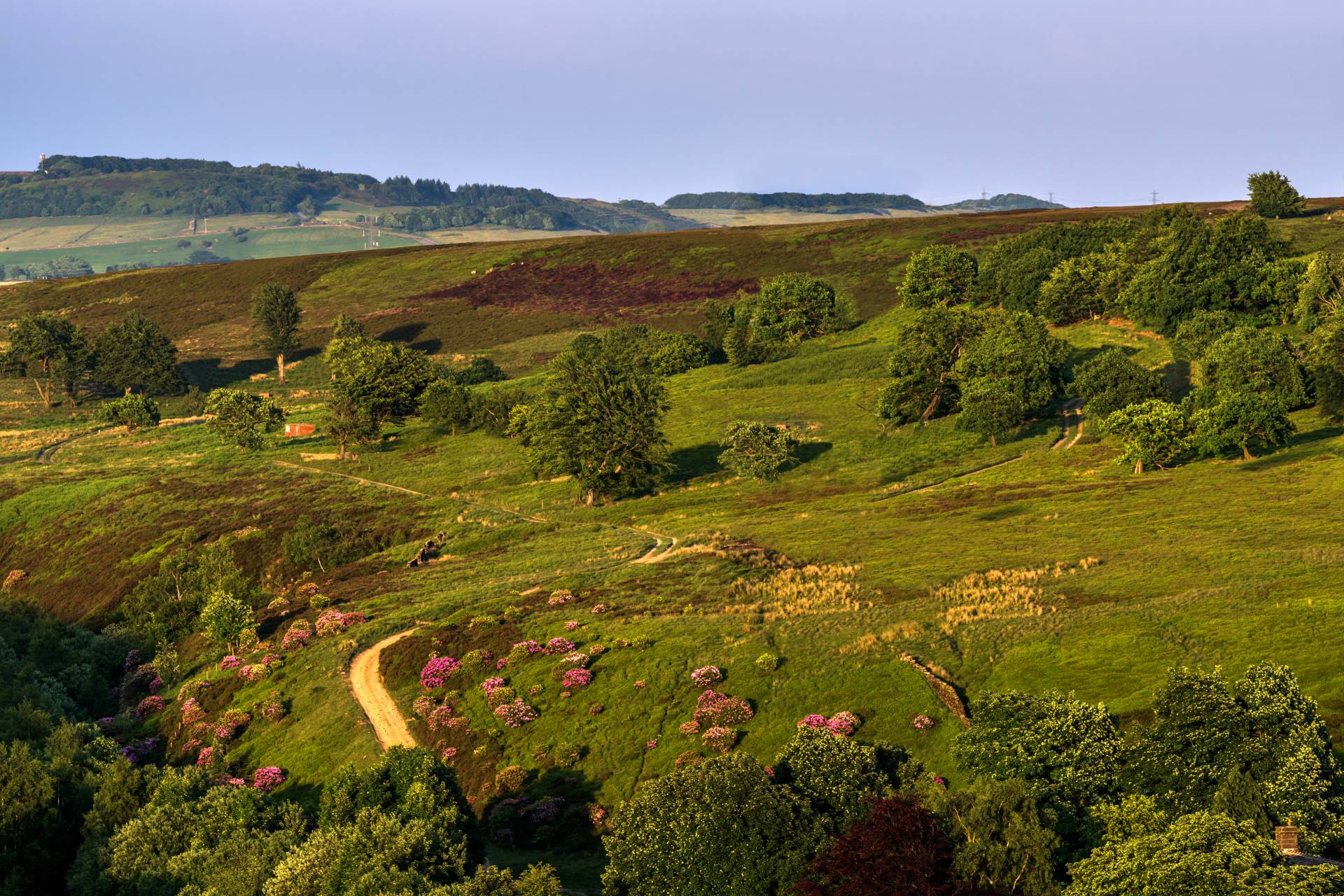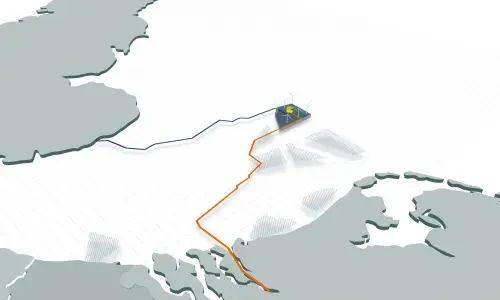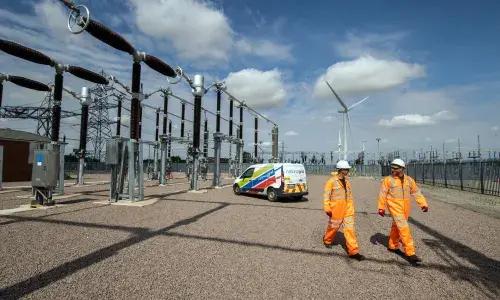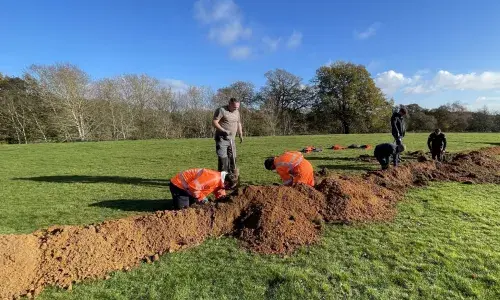
Landscape transformation in the Peak District nears completion as pylons come down
- Seventh and final pylon removed in Dunford Bridge
- 1.5km of overhead line replaced with underground cables
- Major environmental enhancements achieved in terms of both landscape and biodiversity
National Grid has successfully removed the last of seven pylons and 1.5 km of overhead electricity line from the skyline in Dunford Bridge, marking a major milestone in the project to transform views in the Peak District National Park.
As the seventh and final pylon was removed – the culmination of a carefully planned and detailed technical process – National Grid gathered guests from the project’s national Stakeholder Advisory Group, Barnsley Metropolitan Borough Council, the Peak District National Park Authority and a range of other stakeholders who have been central to the planning and construction of the project.
The Going Underground project is one of the first schemes in the world to remove existing high-voltage electricity transmission infrastructure, which has been in place since the 1960s, solely to enhance the landscape.
As part of how it is regulated by Ofgem, National Grid Electricity Transmission has been given dedicated funding to pursue Visual Impact Provision projects to reduce the visual impact of its infrastructure in AONBs and National Parks, with the Peak District scheme among the first to be completed.
The complex construction programme involved placing new cables beneath the Trans Pennine Trail. To maintain access and spectacular views for visitors, National Grid and Morgan Sindall Infrastructure created a temporary diversion to this section of the trail, which will remain open until later this year while the original route is fully restored.
Environmental sustainability has been key to National Grid’s plans, and the project is among the first in the UK to include biodiversity net gain over 25 years. The team has delivered a net gain of 18 per cent, while the latest figures show that 99.96 per cent of construction-related waste has been diverted from landfill.
Leanne Evans, Senior Project Manager for National Grid, said: “This project was asked for and has been shaped and championed by stakeholders, and we are delighted to extend thanks to them with our event today. It’s been a massively challenging but extremely rewarding programme to work on with our partners Morgan Sindall Infrastructure.
“Care for the environment and the local community have been at the heart of our plans. We are planting 6,000 locally-sourced, indigenous trees and hedge plants in the local area as part of our targeted biodiversity net gain activities.
“I’d like to thank my team and Morgan Sindall Infrastructure who have shown great pride in their work and enormous care for the environment in this sensitive, protected landscape.”
Councillor James Higginbottom, Cabinet Spokesperson for Environment and Highways at Barnsley Council, said: “This project has been a great example of partners working closely together, including National Grid, Barnsley Council, and a diverse range of local stakeholders.
“National Grid and Morgan Sindall Infrastructure have worked sensitively and with genuine care for the environment and the local community, keeping people informed each step of the way.
“The temporary Trans Pennine Trail diversion put in place is a great piece of innovation and collaboration. I’d like to thank our Public Rights of Way Team who worked closely with National Grid to make this happen.
“We all have a part to play in protecting our borough for future generations, and thanks to these efforts people have continued to be able to enjoy this unique landscape.”
Chris Baines, chair of the project’s independent Stakeholder Advisory Group, added: “It’s been fantastic to see the project team treating the environment in the same way that they treat health and safety, carefully considering the implications of every action they undertake and the impact it could have on the environment. It is a credit to the team to see such dedication and diligence.
“The project will be transformational for Dunford Bridge and this beautiful part of the Dark Peak. It will bring huge long term environmental, recreational and landscape benefits, and will provide an extremely attractive and accessible eastern gateway to the Peak District National Park.”
More information about the Peak District East VIP project can be found at https://www.nationalgrid.com/electricity-transmission/network-and-infrastructure/visual-impact-provision/peak-district


